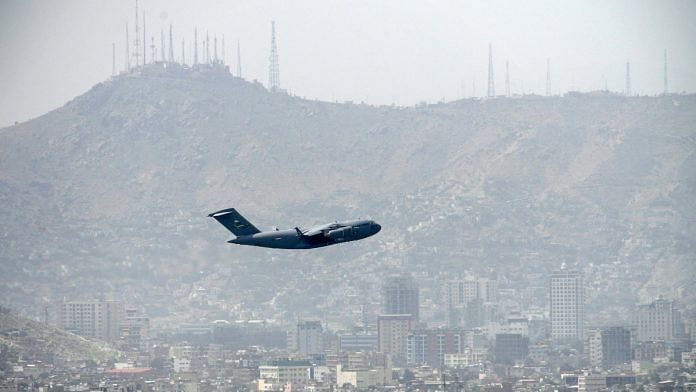New Delhi: A US drone strike near Kabul airport on 29 August mistakenly targeted an aid worker and killed 10 civilians, including seven children, according to a report by The New York Times Friday.
Nearly two weeks ago, the US military carried out a drone strike on a car driven by Zemari Ahmadi, a longtime Afghan worker for a US aid group who was suspected to be a suicide bomber linked to the Afghanistan branch of the Islamic State (IS-Khorasan). The US military, calling it a “righteous strike”, said the suspect posed an “imminent” threat to the American evacuation effort at the Hamid Karzai International airport.
The US military claimed it acted on intelligence that the car was laden with explosives. Defense Department spokesman John Kirby, a day later, said there were secondary blasts after the initial hit.
Based on exclusive video footage and interviews, NYT has raised doubts about the US military’s version of events — specifically whether explosives were present in the car, whether the driver had a connection to the IS-K, and whether there was a second explosion after the missile struck the car.
US officials said an MQ-9 Reaper drone tracked Ahmadi’s vehicle as it drove around Kabul and the missile hit when he pulled up to his house where he lived with his three brothers and their families.
Also read: IS-K, the terror group behind Kabul attack & Taliban enemy that could add to Afghanistan chaos
Drone strike casualties
While the US military has so far acknowledged only three civilian casualties, the NYT report, quoting Ahmadi’s relatives, says 10 members of the family were killed, including seven children.
They were 43-year-old Ahmadi, three of his children — Zamir (20), Faisal (16) and Farzad (10), Ahmadi’s cousin Naser (30), three of Ahmadi’s brother’s children — Arwin (7), Benyamin (6), and Hayat (2), and 3-year-old girls Malika and Somaya.
Family members said Ahmadi had applied for refugee resettlement in the US. “You say he was ISIS, but he worked for the Americans,” Emal, Ahmadi’s brother, told NYT.
Ahmadi’s movements that raised suspicion
According to the report, Ahmadi had for the last 15 years worked as an electrical engineer for Nutrition and Education International (NEI), a California-based aid group that has been fighting malnutrition in Afghanistan.
The morning of the strike, Ahmadi was asked by his boss to pick up a laptop from the NEI office in Kabul. NEI’s country director confirmed this to the NYT. Ahmadi made three stops — picked up two passengers, the laptop from the office and stopped by the NEI country director’s house.
US officials told NYT that the Reaper drone began tracking Ahmadi’s movement when he left his house around 9am. They further claimed they picked up on communication between Ahmadi’s car and an alleged IS-K safe house in the city, which instructed him to make many stops.
After running errands, including distributing food to refugees in a park, Ahmadi and three colleagues left office and headed home around 4pm. US officials claim this is when Ahmadi and three others were seen loading heavy packages into the car, believed to contain explosives.
The passengers denied this, saying they only had two laptops with them and that the trunk only had plastic water-filled containers which Ahmadi was seen filling with a hose earlier that day. After dropping off his colleagues, Ahmadi headed home, located a few kilometers west of the airport.
Despite US officials claiming a second strike had occurred after the first hit, suggesting the car contained explosives, visual investigations by NYT found no evidence of a second, more powerful explosion.
This conclusion was based on examination of the scene of the strike by a Times reporter the morning afterward, and a follow up visit four days later.
Photos and videos also revealed that there was evidence of a missile strike and vehicle fire, but “no collapsed or blown-out walls, no destroyed vegetation, and only one dent in the entrance gate, indicating a single shock wave”.
(Edited by Manasa Mohan)
Also read: In Afghanistan, a new ‘great game’ with ISIS, ISK and Pakistan is on with a vengeance



